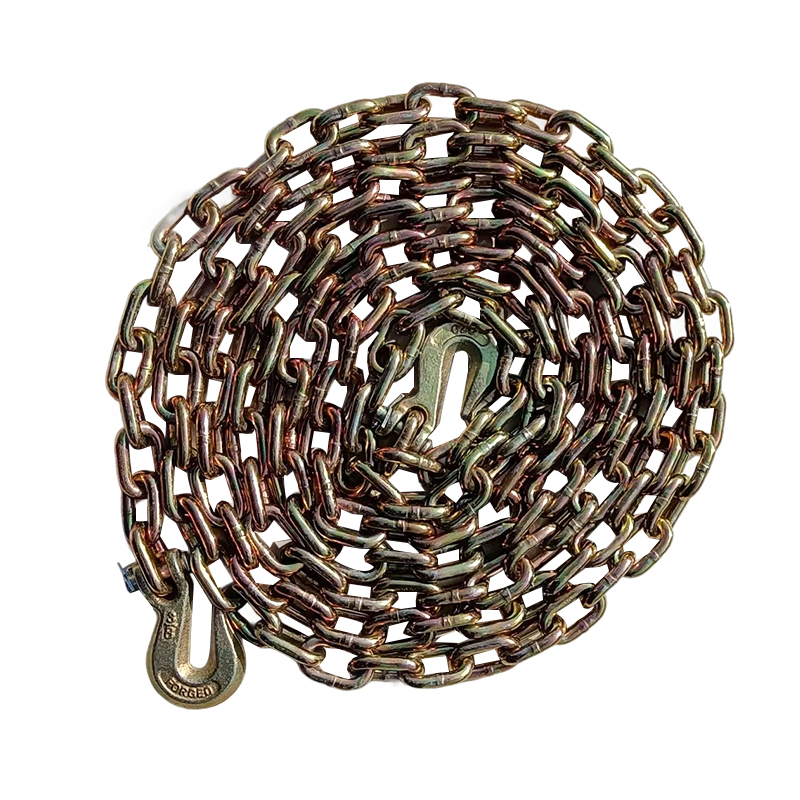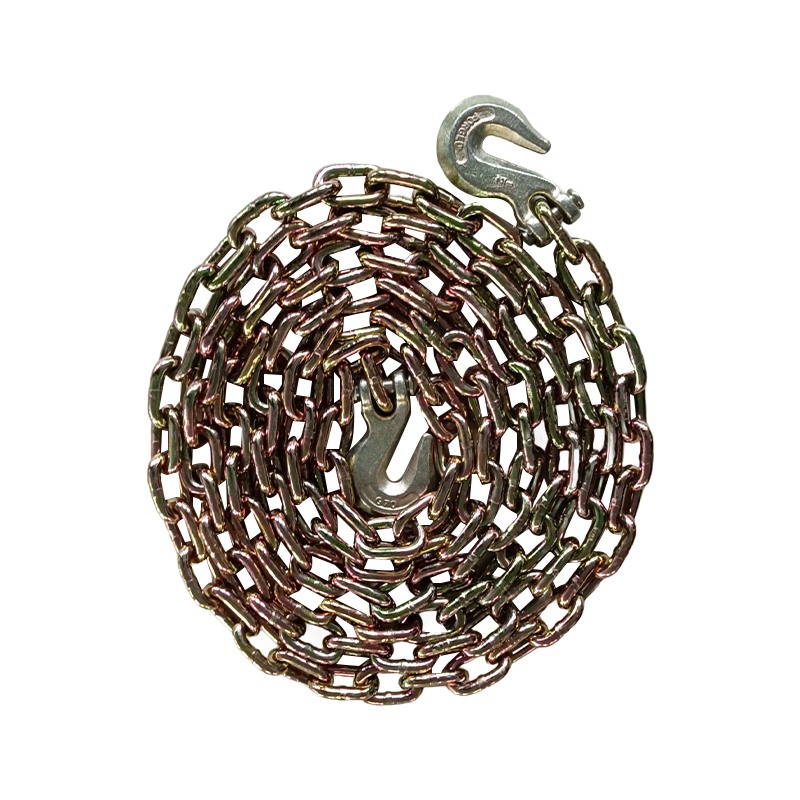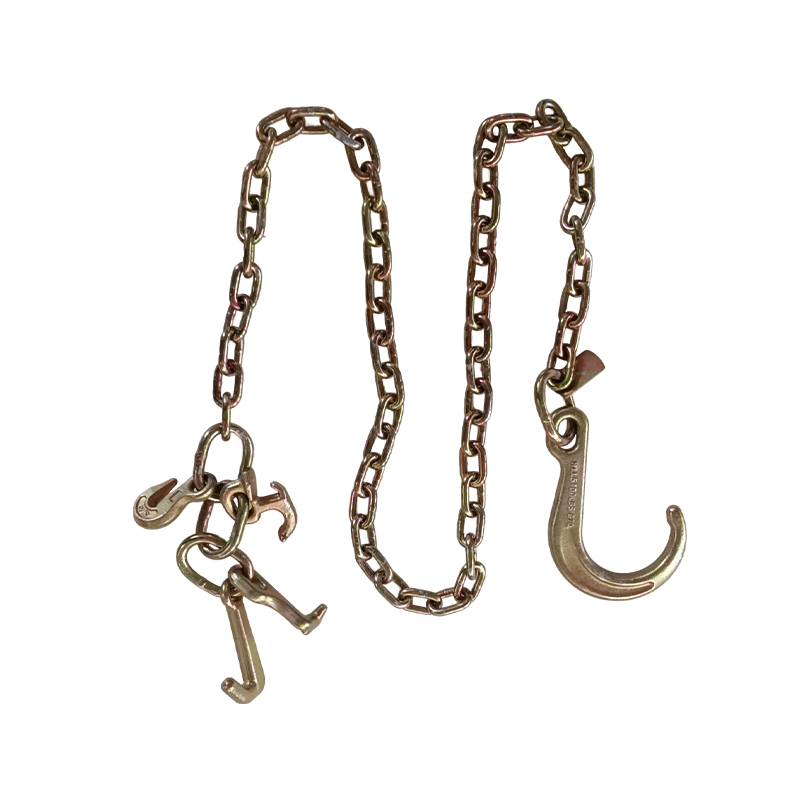What advantages does a bundling chain offer in handling dynamic loads and vibration during transportation?
Release Time : 2025-07-31
Across the vast fields of material transportation, equipment securing, and structural restraint, the bundling chain, despite its seemingly simple design philosophy and powerful functional resilience, has become a silent guardian of connectivity and safety. It transcends the limitations of traditional ropes or buckles, combining the strength of metal, structural intelligence, and ease of use, making it an indispensable and versatile tool in logistics, construction, transportation, rescue, and even military operations. Its value lies not only in the act of bundling itself, but also in its ability to address complex and ever-changing securing requirements in an efficient, reliable, and sustainable manner.
The core value of a bundling chain lies in its clever balance between space efficiency and flexibility. Traditional chains are often too rigid and difficult to store, while ropes, while easily warped, are susceptible to wear and have limited strength. Bundling chains achieve this balance of rigidity and flexibility through optimized link design—typically made of high-strength alloy steel and incorporating rotatable links or flexible connections. It can be easily rolled into a compact circular or spiral shape, significantly saving storage and transport space. It's particularly suitable for vehicle-mounted equipment, emergency kits, or mobile operations. This flexibility not only facilitates portability but also reduces distortion and damage caused by collisions and crushing during storage, extending the chain's service life. When needed, simply unfold the chain and secure it in a fraction of a second using quick connectors (such as snap hooks, shackles, or swivels). This operation requires no complex tools and can be performed efficiently by a single person.
The innovation of the bundling chain lies not only in its physical form but also in its in-depth consideration of dynamic loads and multi-scenario adaptability. During transportation, cargo is subject to dynamic tension and vibration due to vehicle starts, stops, turns, and bumps. Conventional securing methods can easily loosen and fail. The high tensile strength and low elongation of the metal material effectively resist shock loads, ensuring cargo remains secure during long-distance transport. The chain is adjustable in length and, when used with a tensioner (such as a ratchet), allows for precise pre-tensioning to the millimeter, adapting to objects of varying sizes and shapes. Whether securing construction machinery, timber, or pipes, temporarily reinforcing building components or fences, or even securing equipment and vehicles during military exercises, it provides reliable restraint to prevent displacement, tipping, or disintegration.
Bundling chains demonstrate the ultimate commitment to safety and durability. Surface treatments, typically galvanized, spray-coated, or phosphated, provide excellent rust and corrosion resistance, enabling long-term use in humid, salt-sprayed, or harsh outdoor environments. Smooth rotation between chain links reduces frictional loss and avoids stress concentration at connection points during tensioning. High-quality connecting components undergo rigorous testing to ensure structural integrity under extreme loads. Some products also feature safety pins or anti-slip devices for further safety. This comprehensive quality control, from materials to workmanship, ensures that bundling chains are not just disposable tools but reusable, durable assets.
Even more thought-provoking is the potential significance of the bundling chain in promoting standardization and modularization of operations. As a universal fixing unit, it can be seamlessly integrated with logistics infrastructure such as pallets, containers, and racks, creating standardized loading and securing processes and improving overall operational efficiency. In emergency rescue situations, the rapidly deployable chain system can be used to temporarily support, pull, or stabilize collapsed structures, buying precious time to save lives. Its simplicity and reliability have also made it a widely accepted universal tool globally, transcending language and cultural barriers and enabling efficient collaboration.
The bundling chain, while merely a series of metal rings, weaves an invisible web of strength, order, and security. Its flexible form overcomes spatial constraints, its metal's rigidity defies the inertia of movement, and its simple structure carries complex tasks. In an era of pursuit of efficiency, safety, and flexibility, it quietly yet remarkably ensures the smoothness of every transport, the success of every operation, and the reliability of every action, becoming an indispensable "strength link" in the functioning of modern industry and society.
The core value of a bundling chain lies in its clever balance between space efficiency and flexibility. Traditional chains are often too rigid and difficult to store, while ropes, while easily warped, are susceptible to wear and have limited strength. Bundling chains achieve this balance of rigidity and flexibility through optimized link design—typically made of high-strength alloy steel and incorporating rotatable links or flexible connections. It can be easily rolled into a compact circular or spiral shape, significantly saving storage and transport space. It's particularly suitable for vehicle-mounted equipment, emergency kits, or mobile operations. This flexibility not only facilitates portability but also reduces distortion and damage caused by collisions and crushing during storage, extending the chain's service life. When needed, simply unfold the chain and secure it in a fraction of a second using quick connectors (such as snap hooks, shackles, or swivels). This operation requires no complex tools and can be performed efficiently by a single person.
The innovation of the bundling chain lies not only in its physical form but also in its in-depth consideration of dynamic loads and multi-scenario adaptability. During transportation, cargo is subject to dynamic tension and vibration due to vehicle starts, stops, turns, and bumps. Conventional securing methods can easily loosen and fail. The high tensile strength and low elongation of the metal material effectively resist shock loads, ensuring cargo remains secure during long-distance transport. The chain is adjustable in length and, when used with a tensioner (such as a ratchet), allows for precise pre-tensioning to the millimeter, adapting to objects of varying sizes and shapes. Whether securing construction machinery, timber, or pipes, temporarily reinforcing building components or fences, or even securing equipment and vehicles during military exercises, it provides reliable restraint to prevent displacement, tipping, or disintegration.
Bundling chains demonstrate the ultimate commitment to safety and durability. Surface treatments, typically galvanized, spray-coated, or phosphated, provide excellent rust and corrosion resistance, enabling long-term use in humid, salt-sprayed, or harsh outdoor environments. Smooth rotation between chain links reduces frictional loss and avoids stress concentration at connection points during tensioning. High-quality connecting components undergo rigorous testing to ensure structural integrity under extreme loads. Some products also feature safety pins or anti-slip devices for further safety. This comprehensive quality control, from materials to workmanship, ensures that bundling chains are not just disposable tools but reusable, durable assets.
Even more thought-provoking is the potential significance of the bundling chain in promoting standardization and modularization of operations. As a universal fixing unit, it can be seamlessly integrated with logistics infrastructure such as pallets, containers, and racks, creating standardized loading and securing processes and improving overall operational efficiency. In emergency rescue situations, the rapidly deployable chain system can be used to temporarily support, pull, or stabilize collapsed structures, buying precious time to save lives. Its simplicity and reliability have also made it a widely accepted universal tool globally, transcending language and cultural barriers and enabling efficient collaboration.
The bundling chain, while merely a series of metal rings, weaves an invisible web of strength, order, and security. Its flexible form overcomes spatial constraints, its metal's rigidity defies the inertia of movement, and its simple structure carries complex tasks. In an era of pursuit of efficiency, safety, and flexibility, it quietly yet remarkably ensures the smoothness of every transport, the success of every operation, and the reliability of every action, becoming an indispensable "strength link" in the functioning of modern industry and society.







